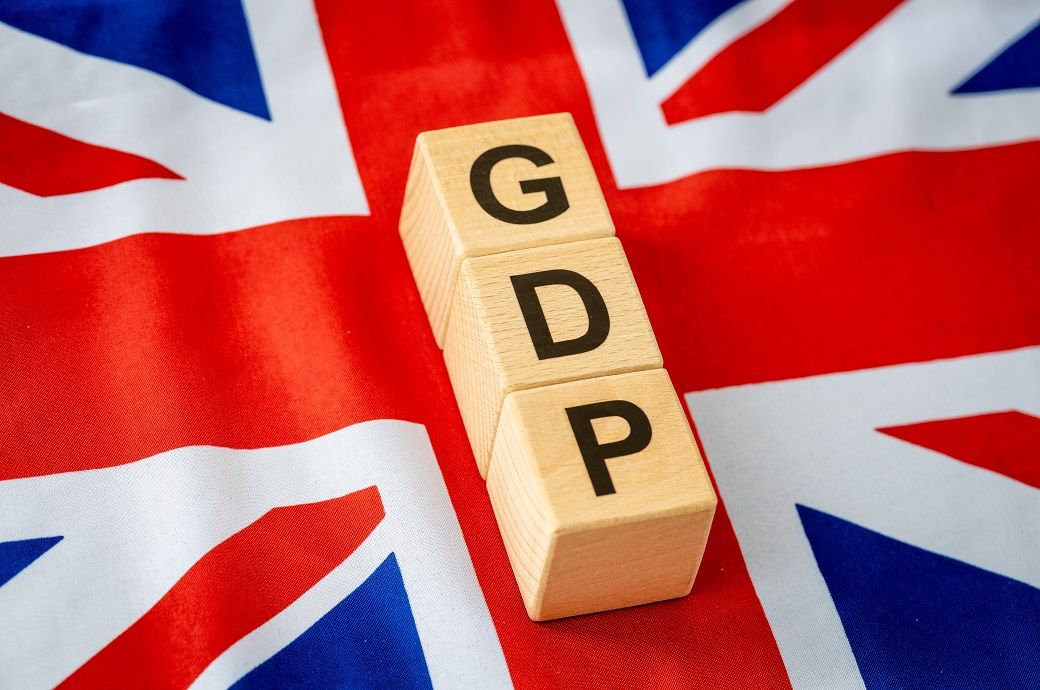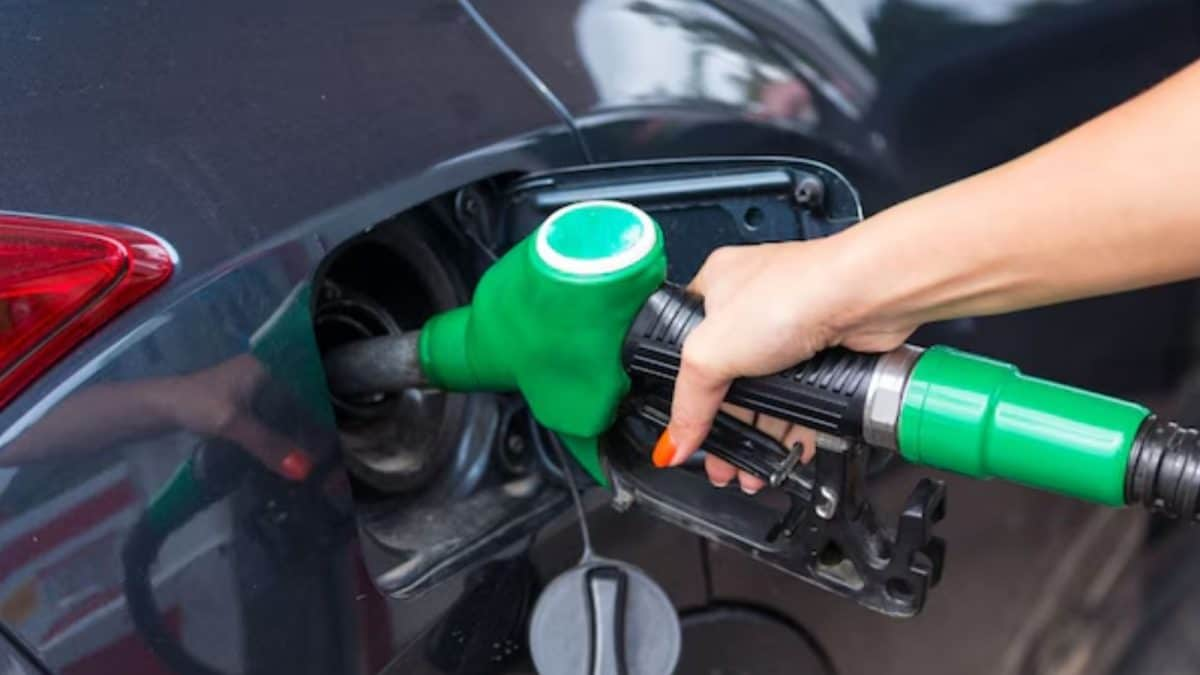Fashion
Real UK GDP grows 0.3% QoQ in quarter to Aug 2025: ONS

Production output fell by 0.3 per cent QoQ in the quarter to August—a smaller decrease than in the quarter to July, when it fell by 1.4 per cent (revised down from a fall of 1.3 per cent in the previous estimate).
Real UK GDP grew by 0.3 per cent quarter on quarter (QoQ) in the quarter to August—a slight rise following a QoQ growth of 0.2 per cent in the quarter to July.
Production output fell by 0.3 per cent QoQ in the quarter—a smaller drop than in the preceding quarter.
Manufacturing showed no QoQ growth in the quarter.
GDP grew by 0.1 per cent month on month in August, following a fall of 0.1 per cent in July.
Manufacturing, the largest production sub-sector, showed no QoQ growth in the three months to August 2025.
Construction output increased by 0.3 per cent QoQ in the three months to August 2025—a smaller increase than the QoQ growth of 0.5 per cent in the three months to July (revised down from 0.6 per cent in the previous estimate).
GDP is estimated to have grown by 0.1 per cent month on month (MoM) in August 2025, following a MoM fall of 0.1 per cent in July (revised down from no growth in the previous bulletin) and a MoM growth of 0.4 per cent in June this year.
Production grew by 0.4 per cent MoM in August 2025, whereas construction fell by 0.3 per cent MoM.
“Today’s data shows the economy picking up slightly, driven by services and construction. That will be welcomed by business, ahead of what is expected to be a challenging Budget next month,” said Stuart Morrison, research manager at the British Chambers of Commerce (BCC).
“Our latest survey shows business confidence and investment levels continue to suffer. A fifth of firms are expecting lower turnover over the next year, and a quarter have scaled back investment plans,” he said.
“For the last twelve months, SMEs [small and medium enterprises] have told us the same story: rising costs, weak investment and little sense of relief on the horizon,” he added.
Fibre2Fashion News Desk (DS)
Fashion
Australian wool lifts this week on strong demand, tighter supply

Fine wools between 16.5 and 19 microns led the rally, lifting around 15 cents on average, while medium microns (19–22 microns) also strengthened by 10–15 cents. Crossbred wools remained the only soft spot, easing 5 cents as the market enters the peak supply period for this category. Carding types held firm with gains of about 10 cents, the Australian Wool Innovation (AWI) said in its commentary for week 23 of the current wool marketing season.
Australia’s wool market strengthened this week, with the EMI rising 17 cents to 1,521 AC/kg and surpassing US$10 for the first time since October.
Fine and medium microns gained up to 15 cents, while crossbreds softened.
Tight supply, reflected in AWTA’s double-digit testing declines, and strong buyer demand lifted clearance rates to 95 per cent.
Auction dynamics also tilted in sellers’ favour. Offerings fell 15 per cent for the week, but the clearance rate rose to 95 per cent, signalling strong competition despite a strengthened Australian dollar. The AUD gained ground even with softer GDP data, supported by US dollar weakness. Although a higher AUD often pressures export competitiveness, buyer demand remained resilient.
Latest November data from Australian Wool Testing Authority (AWTA) continued to underline the tight supply backdrop bolstering prices. Wool tested during November fell 14.2 per cent year on year, while season-to-date volumes from July to November were 10.4 per cent lower. AWTA has tested 116.5 million kilograms so far this season, compared with 130.1 million kilograms a year earlier, the AWI commentary added.
Next week, 41,383 bales are rostered for sale, with all three centres operating on a Tuesday–Wednesday schedule.
Fibre2Fashion News Desk (KD)
Fashion
Clarks fêtes 200th year, opens Milan pop-up with Candiani, expands global e-tail presence

Translated by
Nicola Mira
Published
December 5, 2025
British footwear brand Clarks is celebrating its 200th anniversary this year. In Italy, the brand is marking the bicentennial by opening a pop-up space within the Candiani Denim Store, in piazza Mentana 3 in Milan, where customers are able to personalise their Clarks shoes throughout December.
From December 2 to 9, the Milanese store by Candiani, a premium Italian denim producer with its own jeans line, is hosting a Clarks pop-up shop. Visitors will have the opportunity to explore the British footwear brand’s history, its signature models, and learn about some of the leading figures who have worn Clarks and helped define its identity, influencing generations. A documentary about Clarks’s 200 years in business, entitled From Somerset to the World, will be screened inside the pop-up shop. The shop will showcase a selection of Clarks Originals models, including the Wallabee, Desert Boot and Desert Trek, as well as several items from the Fall/Winter 2025-26 collection, reinterpreting materials, shapes and colours with a contemporary feel.
In parallel with the pop-up shop (where a special event was staged on Thursday December 4), throughout December the Candiani Denim Store is giving Clarks customers the chance to create a personalised version of their shoes, choosing from two Clarks Originals models, the Wallabee and the Desert Boot. The limited-edition shoes will feature a personalised denim fob, and customers will be able to choose from an extensive library of patterns and designs. The motif chosen will be lasered directly on to the shoes at Candiani Custom, the denim brand’s urban micro-factory for bespoke jeans located next to the store.
FashionNetwork.com has had the opportunity to talk about Clarks’s distribution plans in Italy with Fabio Antonini, CEO of 3A, the company that has been distributing the British brand’s men’s and women’s lines since the Fall/Winter 2025-26 season.
FashionNetwork.com: Clarks has been busy overhauling its retail presence in Italy. What are the implementation steps, and what have the initial results been?
Fabio Antonini: Unlike the previous distributor, whose strategy was chiefly aimed at monobrand stores, we have rejigged Clarks’s distribution model by focusing on the wholesale channel and on a strong presence in multibrand stores. This is enabling us to rapidly extend our territorial footprint, making the brand more accessible and better integrated within the Italian market.

FN: How many more Clarks corners are you planning to open in 2026 in Italy? And what about Clarks’s monobrand presence? Are you considering other initiatives like the one with Candiani?
FA: We currently don’t have any plans for new corners or monobrand stores. Our strategy is focused on the wholesale channel and multibrand retailers. The initiative with Candiani was developed as a special project to celebrate Clarks’s 200th anniversary. Over the next few years, we will assess new collaborations and special projects, in line with the brand’s future requirements.
FN: In how many multibrand stores is Clarks currently distributed, and how many more are you planning to reach?
FA: In 2025, we have made Clarks available at 433 clients for a total of 619 doors [in Italy]. Next year, we’re expecting to grow the number of clients served by approximately 10%.
FN: Clarks recently announced and deployed a strategy designed to boost its position in global e-marketplaces, is it also being implemented in Italy?
FA: Clarks’s new global strategy is set to make the brand even more accessible and reachable by online consumers. Its expanded presence on new global marketplaces is making Clarks easier to access in Italy too, strengthening its online presence and making it easier for consumers to buy.
FN: What revenue result did 3A reach in fiscal 2024, how much did it grow by, and what is your forecast for 2025?
FA: In 2024, 3A generated a revenue of approximately €110.3 million, up 4.84% over the €105.2 million recorded in 2023. We’re expecting to grow at a similar rate in 2025.

FN: Have there been new entries or other changes within 3A’s brand portfolio?
FA: Yes, there have been changes. Our portfolio includes underwear by Nike, Jordan, Calvin Klein and Tommy Hilfiger, as well as footwear and other products by Clarks, Converse Shoes, Nike Swim, Nike, Jordan, Converse Apparel Kids, Lacoste Kids, Huggies Apparel and Crep Protect.
We’re pursuing a strategy aimed at introducing new lines with a distribution exclusive, to further enrich our portfolio also in terms of brand quality. Some new lines will feature as early as spring 2026.
Brand background
Clarks was founded in Street, Somerset, in 1825, when Cyrus Clark opened a tannery with his brother James. It began shoemaking by using leather offcuts to create slippers. In 1950, Clarks created the revolutionary Desert Boot shoes. Since then, Clarks has built an archive of over 22,000 models that have been worn across generations all over the world.
In fiscal 2024, Clarks’s parent company C&J Clark Ltd reported a revenue drop of 9.4%, to £901.3 million (approximately €1.07 billion), and a pre-tax loss of £39.3 million. This led the company to overhaul the Clarks brand, cutting overheads, modifying the marketing approach, and repositioning the range. The brand’s retail strategy too has been reappraised, streamlining the store fleet and developing initiatives like the Milanese pop-up store.
Clarks, in typically innovative fashion, is also expanding its online presence with several new launches on global e-tailers like Shein, Walmart, Target, Secret Sales and TikTok Shop. In the UK, Clarks has recently been introduced on Shein and Secret Sales, while in Europe it will be available at Secret Sales Netherlands and Dress for Less later this year. In the Americas, it has been featured on eBay for the last five years, and has recently reached Shop Simon, Shein and Walmart, while it will be available on Target this month.

Clarks is also aiming to consolidate its presence on TikTok Shop. It launched on the Chinese social shopping channel in Singapore and Malaysia last year, and this year it has reached the UK and the Americas, with Europe set to follow in 2026. This expansion drive follows the September announcement of the first Clarks-owned digital marketplace, which is set to be launched in the UK in early 2026.
Candiani is an Italian family company founded in 1938 and based in Robecchetto con Induno, near Milan, in the Ticino Park Nature Reserve. Besides owning the store in piazza Mentana in Milan, with the Candiani Custom micro-factory for bespoke jeans, Candiani owns among others the patent for Coreva, the first and only biodegradable and compostable stretch denim available on the market.
Copyright © 2025 FashionNetwork.com All rights reserved.
Fashion
France abandons bid for the total suspension of Shein’s website

Published
December 5, 2025
On Friday, France demanded a series of measures from Shein to demonstrate that the products sold on its website comply with the law, but dropped its initial request for a total three-month suspension of the online platform, which had been based on the sale of child-like sex dolls and prohibited weapons.
At a hearing before the Paris court, a lawyer representing the state said that Shein must implement controls on its website, including age verification and filtering, to ensure that minors cannot access pornographic content. The state asked the court to impose a suspension of Shein’s marketplace until Shein has provided proof to Arcom, the French communications regulator, that these controls have been implemented.
Shein deactivated its marketplace- where third-party sellers offer their products- in France on November 5, after authorities discovered illegal items for sale, but its site selling Shein-branded clothing remains accessible. The state invoked Article 6.3 of France’s Digital Economy Act, which empowers judges to order measures to prevent or halt harm caused by online content.
“We don’t claim to be here to replace the European Commission,” the state’s lawyer said. “We are not here today to regulate; we are here to prevent harm, in the face of things that are unacceptable.” At the time of writing, the hearing is still ongoing.
In a statement issued last week, the Paris public prosecutor’s office said that a three-month suspension could be deemed “disproportionate” in light of European Court of Human Rights case law if Shein could prove that it had ceased all sales of illegal products. However, the public prosecutor’s office said it “fully supported” the government’s request that Shein provide evidence of the measures taken to stop such sales.
France’s decision comes against a backdrop of heightened scrutiny of Chinese giants such as Shein and Temu under the EU’s Digital Services Act, reflecting concerns about consumer safety, the sale of illegal products, and unfair competition. In the US, Texas Attorney General Ken Paxton said on Monday that he was investigating Shein to determine whether the fast-fashion retailer had violated state law relating to unethical labour practices and the sale of dangerous consumer products.
This article is an automatic translation.
Click here to read the original article.
Copyright © 2025 FashionNetwork.com All rights reserved.
-

 Tech6 days ago
Tech6 days agoGet Your Steps In From Your Home Office With This Walking Pad—On Sale This Week
-

 Sports5 days ago
Sports5 days agoIndia Triumphs Over South Africa in First ODI Thanks to Kohli’s Heroics – SUCH TV
-

 Fashion5 days ago
Fashion5 days agoResults are in: US Black Friday store visits down, e-visits up, apparel shines
-

 Entertainment5 days ago
Entertainment5 days agoSadie Sink talks about the future of Max in ‘Stranger Things’
-

 Politics5 days ago
Politics5 days agoElon Musk reveals partner’s half-Indian roots, son’s middle name ‘Sekhar’
-

 Tech5 days ago
Tech5 days agoPrague’s City Center Sparkles, Buzzes, and Burns at the Signal Festival
-

 Sports5 days ago
Sports5 days agoBroncos secure thrilling OT victory over Commanders behind clutch performances
-

 Sports5 days ago
Sports5 days agoF1 set for final-race showdown as Verstappen exploits McLaren blunder | The Express Tribune

















